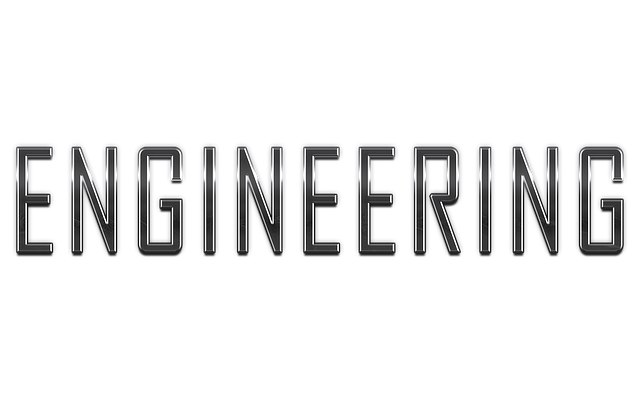When the wheels of negotiation turn toward vehicle ownership, understanding the nuances between a salvage and a rebuilt title becomes a pivotal point. A salvage title signifies a vehicle’s past as a total loss due to extensive damage, while a rebuilt title marks its successful return to roadworthiness after meticulous repairs. Owners considering selling or purchasing such vehicles must grasp the implications of these titles. This article delves into the process of transferring a rebuilt title, outlining the essential steps, necessary documentation, and inspection requirements to ensure a seamless transition. Whether you’re buying, selling, or simply updating your vehicle registration, familiarity with the rebuilt title transfer paperwork is indispensable. Join us as we navigate the specifics of rebuilt title transfers, providing clarity for both seasoned car owners and newcomers to this aspect of vehicle ownership.
Navigating Rebuilt Title Transfers: Essential Steps and Documentation for a Smooth Process

When transferring a rebuilt title, it’s imperative to follow a detailed process to ensure compliance with state regulations and to maintain the vehicle’s legal status. The first step in the rebuilt title transfer paperwork involves submitting a completed application to the relevant Department of Motor Vehicles (DMV). This application often requires specific information about the vehicle and its previous salvage status. Additionally, buyers and sellers must provide evidence of all repairs made to the vehicle, which usually includes detailed documentation such as repair estimates, receipts, and a description of the work completed. These records serve as proof that the vehicle has been restored to a roadworthy condition.
Furthermore, a rebuilt title inspection is an integral part of the process, mandated by most states to verify the vehicle’s safety and functionality. The inspection typically checks for the structural integrity of the car, confirms that all parts critical to safe operation have been replaced or repaired, and ensures that the vehicle meets the state’s emission standards. Upon successful completion of the inspection, the DMV will issue a rebuilt title, reflecting the vehicle’s history. Sellers must disclose the salvage history to potential buyers, ensuring transparency during the transaction. Prospective buyers should review all paperwork and ensure that the required inspections have been completed before purchasing a car with a rebuilt title to avoid future complications. Understanding and adhering to these steps are essential for a smooth transfer of a rebuilt title, ensuring both the buyer’s and seller’s compliance with the law.
Understanding the Distinction Between Salvage and Rebuilt Titles in Vehicle Ownership

When a vehicle is declared a total loss due to extensive damage, it receives a salvage title. This designation indicates that the car is not fit for safe operation on public roads. Conversely, if the same vehicle undergoes comprehensive restoration and repairs, meeting the necessary safety and legal standards, it can transition from a salvage title to a rebuilt title. This process involves meticulous documentation of all repair work, including detailed part replacement lists, to ensure transparency and compliance with state regulations. Buyers and sellers must be well-versed in the rebuilt title transfer paperwork, which includes submitting proof of repairs, a completed application for title and registration, and payment of applicable fees to the Department of Motor Vehicles (DMV). The process culminates in a rigorous inspection to confirm that the vehicle is restored to safe driving conditions. Sellers looking to dispose of their rebuilt title vehicles should prepare all relevant documentation, including the title transfer for salvage-to-rebuilt cars, and be ready to present evidence of the rebuild during the inspection phase. The specific requirements for a rebuilt title inspection can vary by state, so it is imperative to consult the local DMV’s guidelines before proceeding with the transfer process. Understanding these nuances not only ensures legal compliance but also provides peace of mind that the vehicle has been restored to roadworthy status.
Comprehensive Guide to Selling a Car with a Rebuilt Title

When preparing to sell a car with a rebuilt title, it’s essential to have all the necessary paperwork in order to facilitate a smooth transfer of ownership. The process begins with gathering documentation that verifies the vehicle has been restored to safe operating condition. This includes detailed records of the repair work completed, which should be comprehensive enough to detail the parts replaced and the extent of the restoration efforts. These records serve as proof that the car meets the salvage-to-rebuilt criteria set forth by your state’s Department of Motor Vehicles (DMV). Additionally, you’ll need the original rebuilt title or a copy certified as true, along with any other documents required by your state for a title transfer.
Once you have compiled the necessary paperwork, the next step is to ensure the vehicle passes the required inspection. This typically involves a state-certified inspector who confirms that the car is roadworthy and that the repairs have been executed properly. Upon successful inspection, you can proceed with the title transfer for salvage-to-rebuilt cars. This entails filling out specific forms provided by your state DMV, such as an Application for Title and Registration, and submitting them alongside the aforementioned documents and a fee for processing. It’s important to familiarize yourself with the rebuilt title transfer paperwork requirements specific to your state, as they can vary. By adhering to these steps and ensuring all paperwork is complete and accurate, you can efficiently sell your car with a rebuilt title, providing potential buyers with the confidence and clarity they need for a secure transaction.
The Process of Transferring a Rebuilt Title: Inspection Requirements and Necessary Forms

When transferring a rebuilt title, it is imperative to adhere to state-specific regulations, as the process can vary by jurisdiction. Generally, the owner must provide evidence that the vehicle has been repaired to a safe and functional condition. This includes detailed documentation of all repairs made, often in the form of repair invoices or mechanic’s reports, which should be submitted alongside the rebuilt title transfer paperwork. These documents serve as proof that the vehicle has met the necessary safety standards and is fit for road use after its salvage status was rectified.
The state Department of Motor Vehicles (DMV) typically requires a comprehensive inspection to ensure the vehicle’s integrity post-repair. The inspection must be conducted by an authorized entity, such as a certified mechanic or a DMV-approved facility. This process verifies that the car’s frame and body are intact, all parts critical to safety have been replaced with new components, and the overall structure is free from rust and corrosion. Alongside the inspection report, sellers must complete specific forms for the title transfer for salvage-to-rebuilt cars, which may include a Bill of Sale, an Application for Title, and a rebuilt title certificate application. These forms, coupled with the required fee, legally transition the vehicle’s status from salvage to rebuilt. Buyers should ensure they are familiar with their state’s requirements for selling a car with a rebuilt title to facilitate a smooth transfer of ownership. It is essential to handle this process diligently to avoid any legal complications or issues with future vehicle inspections.
When concluding the transfer of a rebuilt title, it’s imperative to follow the outlined steps meticulously. The process involves detailed paperwork, thorough vehicle inspections, and specific forms submission to the Department of Motor Vehicles (DMV). A clear understanding of how to transfer a rebuilt title ensures compliance with state regulations, safeguarding both the buyer and seller from potential legal issues. Whether you’re looking to sell your car with a rebuilt title or transfer ownership after repairs, adhering to the title transfer for salvage-to-rebuilt cars protocol is essential. Remember, the rebuilt title inspection requirements are stringent to guarantee vehicle safety on the road. By understanding and properly executing each step in the rebuilt title transfer procedure, you contribute to the integrity of the secondhand car market and promote road safety.



